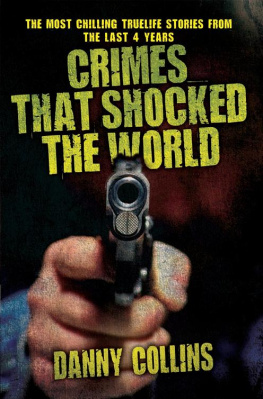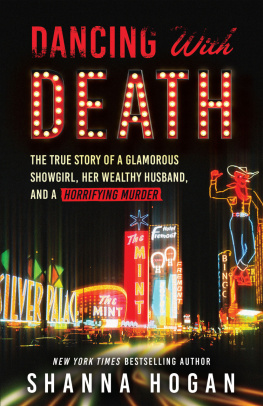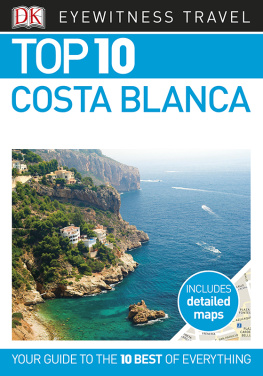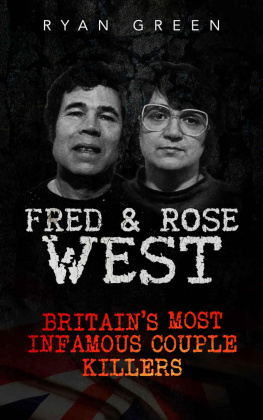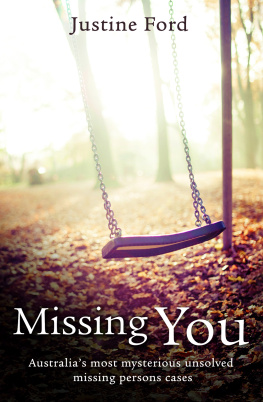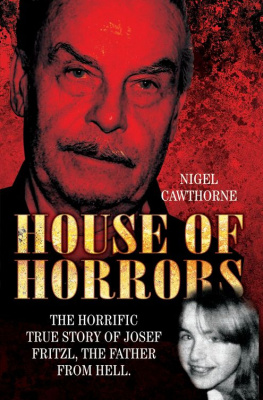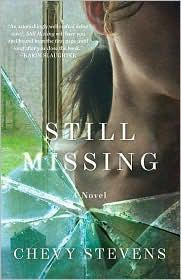This book is dedicated to the memory of Linda and Anthony OMalley, for whom a dream in the sun became a nightmare.
GIVE ME THE LIBERTY TO KNOW, TO UTTER, AND TO ARGUE FREELY ACCORDING TO MY CONSCIENCE, ABOVE ALL OTHER LIBERTIES.
WILL YOU WALK INTO MY PARLOUR? SAID THE SPIDER TO THE FLY, TIS THE PRETTIEST LITTLE PARLOUR THAT EVER YOU DID SPY.
MANY PEOPLE THINK THAT WHEN A SPANIARD SAYS MAANA IT MEANS TOMORROW. IT DOESNT. IT MEANS NOT TODAY.
W hen I first considered writing this story of the investigation into the infamous Costa Blanca house-hunter murders of Anthony and Linda OMalley I wondered how many friends Id have left when it was all over.
The OMalley investigation lasted from October 2002 to the discovery of the bodies on March 25 2003. Many mistakes were made and the wrong conclusions drawn. Witnesses misplaced timelines and some vital evidence was ignored.
More especially, all investigation for the police of two national forces ended with the disinterment of two decomposed corpses on that miserable March night. The Spanish police were satisfied and the Welsh police could wrap up a six month missing persons inquiry with honour but there were still, for me, faces out there in the shadow.
I believe at least two more persons were involved in the plot that led to the kidnap and deaths of the victims. The fact is that nothing is ever neatly tied up and every investigation finishes up with annoying loose ends. The solution for investigators is to find the tidiest ending and close the file.
The kidnap and murders of Linda and Anthony OMalley were crimes that shocked Spain. The realisation that such a fate could befall a pleasant middle-aged couple engaged in nothing more ominous than the search for a holiday home in the foothills of the Spanish sierras invaded the comfort zone of thousands of British expatriates who had emigrated to the Spanish Costas for a life of retirement in the sun. Mortal danger, it appeared, lurked in even these idyllic surroundings.
Spain is regarded as a comparatively safe country in which to live look no further than the white flight syndrome recorded in Britain as many emigrate to the shores of the Mediterranean from a crowded country awash with crime and unfettered immigration.
In Spain on the sun-kissed Costas crime certainly exists but it is the crime inherent in all western societies. Street muggings, burglary, credit card fraud, and that crime peculiar to Mediterranean resorts from Mlaga to Naples, the infamous motorised bag-snatch known as el tirn.
All of these crimes find their roots in acquisitive, materialistic societies. What the affluent majority possesses, the poorer minority wants. The under-achievers rob the achievers. It is a history as old as Man.
But, given the odd crooked developer, blatant property fraud in Spain is rare given the good advice offered by lawyers and real estate agents, and murder for gain is rarer still. Yet while murder most foul undoubtedly took place in the OMalley case, this is more a tale of unrelenting tragedy and a progression of events that were directed by fate into a pattern they were never meant to take.
In this way, the story of Linda and Anthony OMalley is unique. It evolved through startling coincidences in time and place and needed the intervention of others who never dreamed what the outcome would be. The truth is it startled all of us, and even the professionals involved in the investigation and those they sought and finally arrested couldnt have imagined the tragic outcome in a decade of what-ifs and maybes.
My involvement in the case came with my introduction to the relatives who came to Spain to animate the search for their loved ones and to the police officers who accompanied them, the dedicated Welshmen who would see a missing persons inquiry on foreign soil through to a murder inquiry and its tragic end.
The case intrigued me. As an investigative journalist I found myself filling in the gaps and following up clues as the hunt grew more intense, my interest was encouraged by my sympathy for the imagined plight of the Linda and Anthony OMalley and the very tangible distress of their families.
The story as it developed took on all the mystery of a first class thriller that captured the attention of two nations and focussed the spotlight of Europe on the Costa Blanca. At my news desk I received calls from media as far away as South Africa begging for the latest news on the search. Suddenly Linda and Anthony OMalley were everybodys sister and brother, parents, and grandparents. Their imagined fate was the topic of conversation in bars and cafeterias across Spain. Where had they gone? Who had taken them?
Looking back on my files over those six months of the hunt, I see my preoccupation with small details, notes reminding me to ask questions that would turn out to be irrelevant to the mystery and here and there a name or telephone number that would later prove of the highest importance.
There are photographs too, scores of them, of deserted farmhouses and barren landscapes, of faces and locations accompanied by hastily scribbled notes that at the time were intelligent comments and now need thought in their translation.
They were never originally intended to form the basis of a book. At first I toyed with the idea of writing something for a Sunday supplement, a cautionary tale for nave travellers, but there was too much to tell, too many words born over 43 months and my story was unique. I had interviewed witnesses who were never questioned by the Spanish police, one of whom was probably the last person to see the OMalleys alive other than their killers.
And who were the killers? I had also witnessed a hijacked investigation whose thoroughness would be ignored, even unmentioned in court. I heard no mention by a vengeful prosecution of a mysterious third man whose name was raised by the defence but rejected as inadmissible. I listened to fanciful submissions cobbled together by a desperate defence. Yet I would trace the third man to the UK and contact both him and his family.
This was a story that had never been imagined and much of it never became part of the police investigation. Many of my findings and interviews are reproduced here for the first time.
Relating the history of a crime such as murder is a grisly business and gruesome details often cannot be avoided, nor should they be if the tale is to be told with any regard for the truth. It is easy enough to obliterate a surname or change the identity of a witness who wishes for anonymity but details shouldnt be overlooked when they are crucial to the plot.
Certainly this story has its dark side; how else could such a heinous tale of kidnap, torture, and murder be told? But it is also a recounting of love and devotion, of how two people who loved together died together within moments of each other; and of the devotion of a brother, sister, and daughters, and of the Welsh detectives who were determined to see justice done right through to the end.
It is also a cautionary tale for those who see only good in their fellow men, for the victims of these multiple crimes were trusting people who confided their dreams too many times to the wrong people and paid for their naivety with their lives.
I first considered writing this book soon after the arrests in 2003 but shelved it when I realised the whole story had not reached the end without the trial and imprisonment of a swaggering self-seeking conman and his unsavoury acolyte. Following the trial there were appeals but these too have now been heard.
As always the time-honoured delaying tactics of the professional writer came to the fore. Other business, telephone calls, a television series that couldnt be missed, long walks to clear the mind and books and magazines to fill it up again. But behind it all was the nagging feeling that I was putting aside something that had to be done. The OMalley story had to be told and I was the only one who could tell it. I owed a debt to two people I had never met.



